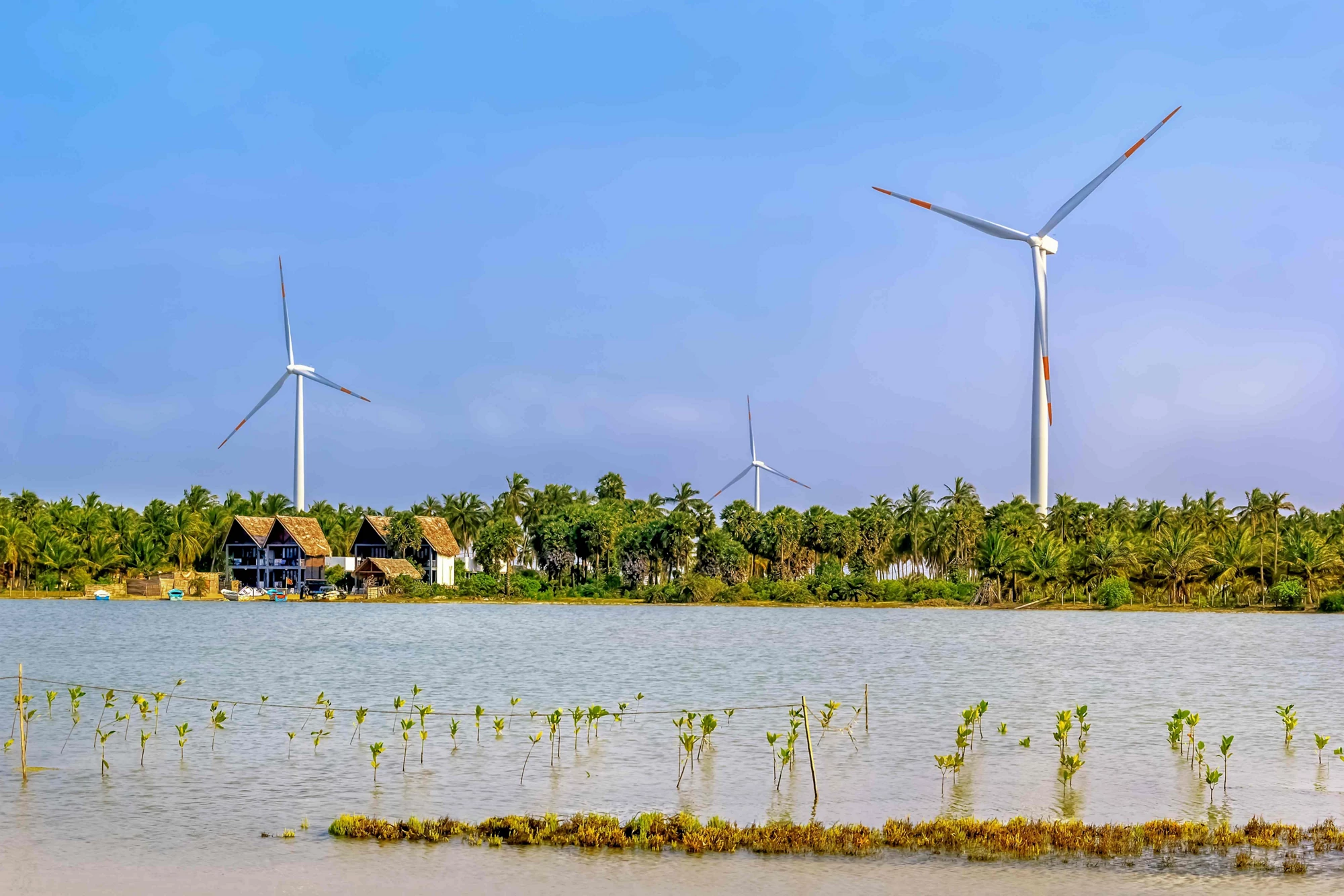 solar
solar
The theme One Earth, One Family, One Future of the G20 Summit held earlier this year in New Delhi, India reflects the interconnectedness of our planet as well as the need for the host region, South Asia, to act collectively to safeguard its future. South Asia is after all, the fastest growing region of the developing world, yet one of the most susceptible to climate change and the least integrated. As our planet tilts precariously towards a critical threshold in global warming in the coming decade, dramatic shifts away from fossil fuels are required to slow down climate disaster, the main topic being discussed right now at the COP28 in the United Arab Emirates.
South Asia’s continued success will therefore hinge on how well it balances economic ambitions with laying the foundation for a more climate resilient future. This requires the region to embrace energy transition by reducing its dependence on fossil fuels, finding novel renewable energy solutions, and advancing regional energy cooperation.
Two-thirds of energy used in South Asia is imported and fossil fuels account for about 80 percent of energy production. The region is set to witness a quantum leap in energy needs, given that it will add 600 million more people over the next 30 years, creating tremendous tension between ensuring energy security and committing to green energy transition policies to ensure a better planet. Notably, for South Asia, it is the power s ector itself that is the number one contributor to carbon emissions—at 68 percent when compared to other sectors.
The good news is some South Asian countries are ahead of the curve in exploring renewable power to capitalize growth and combat climate change.
Cracking the Whip on Fossils with Renewable Energy
Maldives’ energy sector has witnessed transformational change with two World Bank-funded projects to replace fossil fuels with solar energy, steering the nation towards net zero by 2030. The ASPIRE and ARISE projects have helped install more than 50 megawatts of solar capacity and 40 megawatt hours of battery storage, enabling never-before renewable energy projects across the islands. These efforts attracted funding from 63 private investors and exemplify how the private sector is a critical stakeholder in addressing financing needs of developing countries to reach net-zero emissions. Maldives’ transition will reduce the country’s energy import bill by approximately $30 million and protects this island nation from losing 80 percent of its land in the next few decades.
India is making aggressive changes to its energy mix to reach its target of net zero by 2070. In solar notably, the country has seen a jump from 4 to 13 percent in overall solar energy use between 2014 and 2022, and solar energy is projected to account for 30 percent of the country’s generation capacity by 2040, driven by a concerted policy effort. Two World Bank programs are supporting India’s solar energy efforts: the $648 million Grid-Connected Rooftop Solar Program makes rooftop solar affordable to residential consumers and the Shared Infrastructure for Solar Parks Project powers more than half of Delhi’s Metro on solar energy from Rewa, Madhya Pradesh, located more than 800 kilometers away. India is also promoting demand side efficiencies by modernizing its grid and establishing supply side energy efficiency with the government-run UJALA program, transitioning households to LED lighting known to consume up to 60% less electricity and reduce carbon-dioxide emissions. In addition, India is decarbonizing its industrial and transportation sector with the electrification of heavy-duty vehicles—particularly buses—as a priority policy intervention.
Bhutan, already a net-zero country, is in a privileged yet precarious position to help its neighbors and the world achieve their net zero targets with its abundant hydropower resources. However, the country needs investment support to unleash the full potential of its hydropower, to even keep its own economy alive. The overall feasible hydropower potential in Bhutan is at a staggering 32.6 gigawatts, but as of 2022, the total installed capacity in Bhutan only stood at 2.4 gigawatts, of which 80 percent is exported solely to India. Given its own growth in energy-intense industries, Bhutan has seen an upsurge in electricity needs and risks facing power shortages in “lean” seasons or its dry winter months.
The Best is Yet to Come
Despite these strides and a substantial increase in cross-border power transmission—from 2.1 gigawatts to 4.2 gigawatts between 2015-2022, and the recent groundbreaking development of India allowing Nepal to buy and sell power in its national market—South Asia’s green energy transition remains incomplete. The region remains lagging behind in terms of establishing its electricity market despite the significant upside regionally and at country level.
A regional electricity market would integrate countries, increase synergies among clean energy resources, and reduce C02 emissions. Countries have begun to realize that they can avoid adding more generation and meet their net zero targets by simply integrating with neighboring countries to share their clean energy sources. Bhutan and Nepal, both hydropower stalwarts, have clear synergies with India—seeking to meet 50 percent of its energy requirements from renewables by 2030—and with Bangladesh aiming to reduce carbon emissions by 22 percent before 2030. Nepal and Bhutan can significantly contribute to meet these countries’ energy transition targets.
In Sri Lanka, a recently completed study showed how deploying 500-1000 megawatts of offshore wind will help the country meet its 70 percent renewable energy target by 2030. Further, the long-waited Sri Lanka-India grid-to-grid transmission interconnection would enable exchange of clean energy, reduce generation costs, and potentially attract private sector participation.
Energy trade could also help the region tide over seasonal variations in demand and complement each other’s needs successfully, as depicted by the table below. *Our ongoing studies show that such regional interconnections across South Asia will enable significant market-based trade and lead to a 4.5% reduction of CO2 emissions by 2035.
A regional electricity market could also spur economic growth across South Asia. Power shortages and inefficiencies cost South Asia a significant 4-7 percent of GDP and lack of electricity is a real barrier to health, education, food security, and poverty reduction. *Ongoing studies show that a 55% underutilization in existing cross-border transmission between Bangladesh, Bhutan, India, and Nepal between 2022-2023 leads to a loss of more than $600 million in annual trade in the region. On the other hand, a regional market-based electricity trade can potentially yield up to $17.4 billion in cumulative economic benefits in 2023-2035.
The Way Forward: More Power with Shared Power
To unleash robust regional electricity trade, South Asia needs a dedicated multilateral platform bringing together all stakeholders to address the complex needs of each country and create codes, policies, and regulations for the overall growth of the region’s power sector. South Asia has benefited from bilateral agreements in the past, as is the case between India and Bhutan and India and Nepal, but the real gains are in connecting all South Asian countries.
South Asia must also develop policies that increase private sector involvement and make the transition toward renewable energy at scale financially attractive —there is after all, a $5 trillion gap in the annual financing needed to reach net-zero emissions. As countries are meeting at COP28 to brainstorm clean and just energy transitions to combat the climate crisis, it is time for South Asia to leverage the power of regional energy trade to light up the quality of life of entire nations and the people of its region. #OneSouthAsia
*These data are from an upcoming report.
This blog is part of a series that explores examples of policies, investments, and partnerships that are delivering results and that could be scaled to match the ambition of the World Bank's new playbook for South Asia. Within the theme of Resilience, we will be publishing follow-up blog posts that delve into various elements.





Join the Conversation